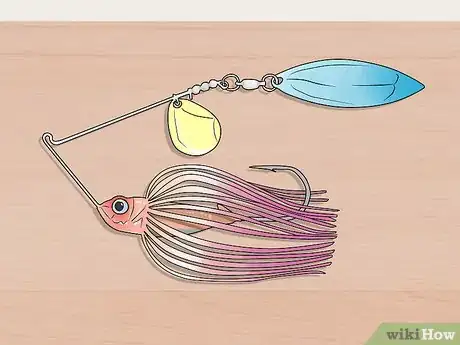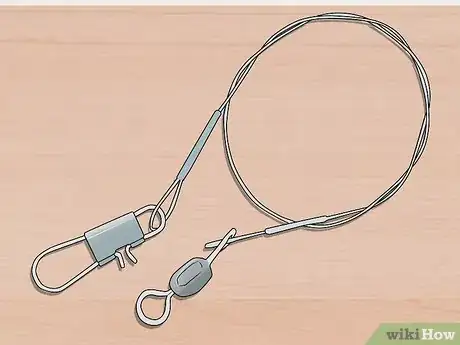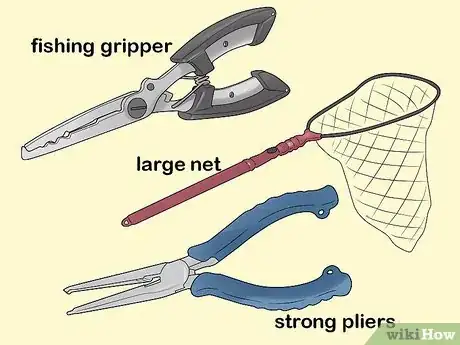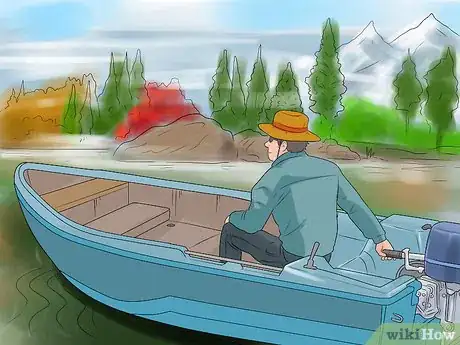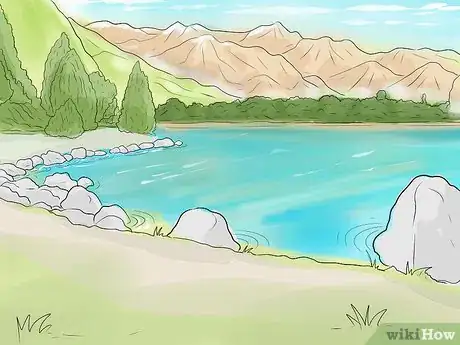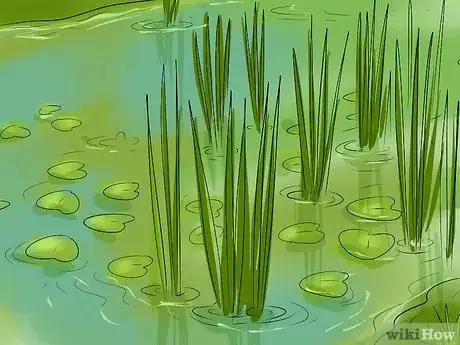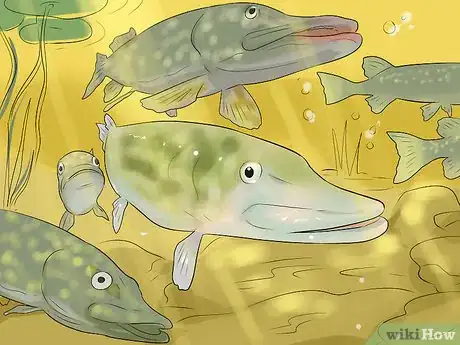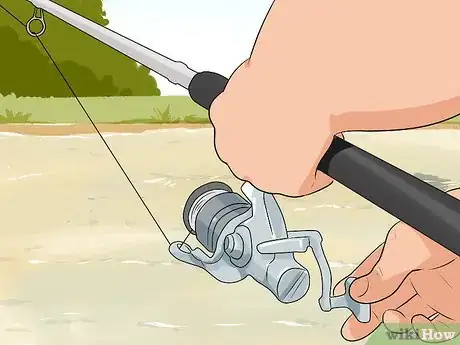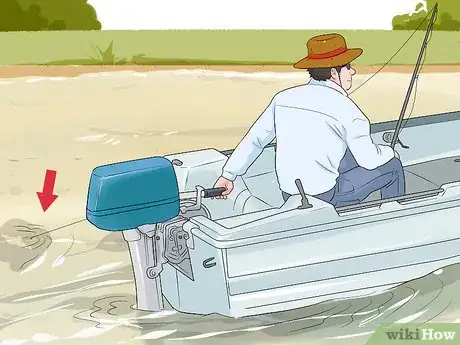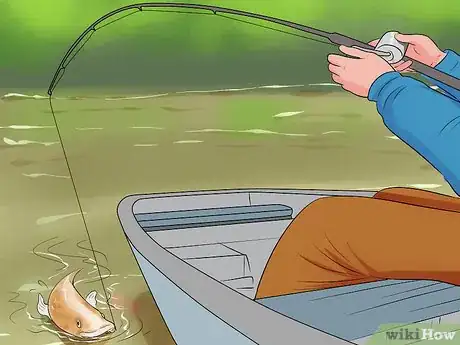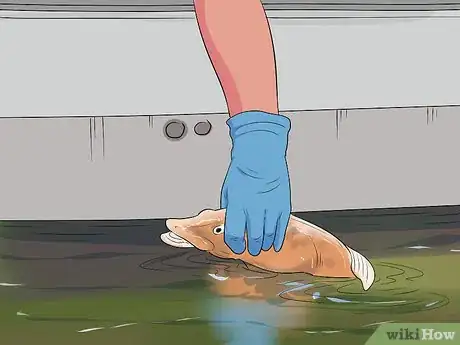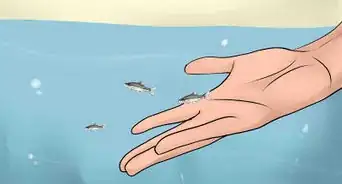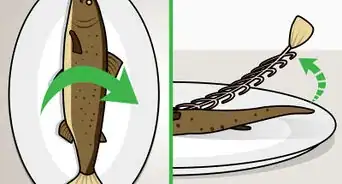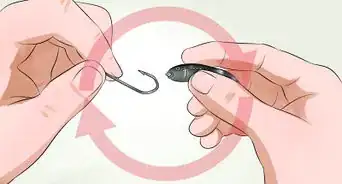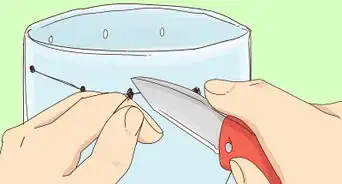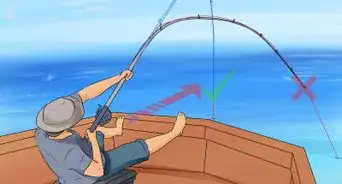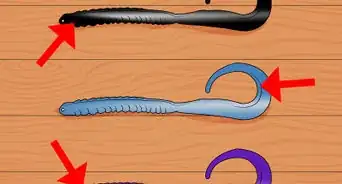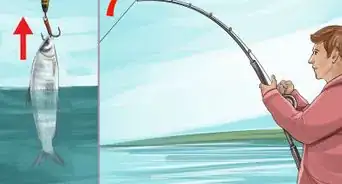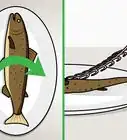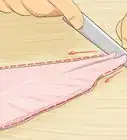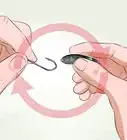This article was co-authored by wikiHow Staff. Our trained team of editors and researchers validate articles for accuracy and comprehensiveness. wikiHow's Content Management Team carefully monitors the work from our editorial staff to ensure that each article is backed by trusted research and meets our high quality standards.
There are 13 references cited in this article, which can be found at the bottom of the page.
This article has been viewed 240,011 times.
Learn more...
Pike, or Esox, are a freshwater fish that are known for their elongated bodies and sharp teeth. Native to North America and parts of Eurasia, these fish are predatory by nature and will chase down large bait with relative ease. To reel in pike, you need to get a medium-heavy rod, strong braided line, and a durable leader. Once you get the right gear, you can cast fish or troll the water with the proper bait to catch the fish.
Steps
Getting the Proper Equipment
-
1Buy a 7 feet (2.1 m) long medium-heavy rod with moderate action. Pike are large fish that tend to fight back, and lighter rods made for smaller fish may break under the pressure. A moderate action, sometimes called a “light” action, allows the pole to bend at the end, making it easier to reel in fish.[1]
- If you are having trouble selecting the right rod, read reviews online or ask a customer service specialist at a fishing store for advice.
-
2Use large, brightly colored baits. Pike use their eyes to hunt and are attracted to colors like white, chartreuse, and bright orange. Use reflective or brightly colored baits to catch the pike’s eye. Good baits to use for pike include walking baits, buzz baits, spinnerbaits, spoons, and crankbaits.[2]
- Pike also react to sound and vibration.
- Spinnerbaits have a metal blade that spins while they are in motion and are a great bait to catch pikes under 10 pounds (4.5 kg).
- Crankbaits are a hallow fishing lure that resembles small colorful fish and are great when fishing for larger pike.[3]
- Buzzbaits are colorful and typically have an undulating plastic or feather tail.
Advertisement -
3Purchase a strong 20–30 pounds (9.1–13.6 kg) braided line. Traditional monofilament line isn’t strong enough to carry the load of a large pike fighting against you. Purchase a durable, high-quality braided line to prevent it from breaking under the weight of the fish.[4]
-
4Get a strong fluorocarbon or steel leader. The leader is the line that connects your hook to your main fishing line. Pike have sharp teeth that can cut through traditional leaders. Purchasing and equipping a durable fluorocarbon or steel leader can prevent this.[5]
- A strong leader will prevent you from having to repurchase expensive lures if your line gets chewed through.
- Your leader should be about 1 foot (30 cm) long.
-
5Get a fishing gripper, large net, and strong pliers. Pike will fight and bite once they are hooked. To avoid being bit, use fishing grippers to control the fish, then use pliers to remove the hook. You shouldn’t handle pike with your bare hands or put them close to your face.[6]
Finding Pike
-
1Fish for pike in northern climates. Pike naturally habitat in seasonal climates like the Northern United States, Canada, and countries in Europe and Asia. In North America, pike are often found in reservoirs in Vermont, Minnesota, the Dakotas, Michigan, and the Northern Territories of Canada.[7]
- Pike can also be found in countries like France, Germany, and Russia.
- If you live in warmer climates, you may have a harder time finding pike.
-
2Search for pike in lake inlets and outlets. If you can’t find pike in the shallows or in deep water, they may be congregating near the inlet or outlet of the body of water that you’re fishing. Find the areas where water flows in or out of your body of water and look for congregating pike.[8]
- If you don’t find pike near the mouth of an inlet, travel upstream to see if they settled in calmer waters.
-
3Fish for pike in the morning and during sunset. Pike usually feed in the morning and can be found in open or shallow water. As the day goes on, pike are typically less active and will go after lures less frequently. As the sun goes down and the water starts to cool, the pike will move back in open or shallow water.[9]
- During the afternoon, you can typically find pike floating near weed beds or swimming in deeper waters.
-
4Contact a local fishing store to see if pike are abundant in your area. Search online to find fishing stores near where you want to fish. Call them to see if there are pike in the lake or reservoir you plan on fishing. You can also talk to other fisherman to determine if there is a body of water that is abundant with pike.[10]
- You can search for fishing groups in your area online.
-
5Fish in shallow water with aquatic vegetation when the water is colder. Pike’s elongated bodies make them the perfect predators in high grass and shallow waters. Look for pike in areas like bays and flats during the fall and the early spring.[11]
- Pike are commonly found in high weeds, lily pad fields, or wild rice beds.
-
6Look for pike in deeper water during the summer. As the temperature warms up, pike will seek deeper water. During these times it’s best to fish for pike near the center of the lake or reservoir.[12]
-
7Identify large gatherings of pike. Pike will typically swim around other pike and can often be found congregating in large groups. If you are trolling or casting in shallow or weeded waters, you may be able to visually identify groups of pike.[13]
- If you’ve had prior success in an area on a lake or river, try fishing for pike near the same location.
Fishing for Pike
-
1Reel in with a jerking motion while cast fishing. If you’re fishing in shallow, vegetated areas, it may be better to cast your rod rather than troll the water. Instead of reeling your line back in a smooth motion, quickly reel, stop, then reel again. This will create a jerky movement that replicates the appearance of prey and will catch a pike’s attention.[14]
- The more jarring your lure moves, the more likely the pike will attack it.
-
2Troll for pike instead of casting. Drop your line in the water, give it some slack, and drive your boat 2–3 miles per hour (3.2–4.8 km/h). If you aren’t getting bites, don’t waste your time in the same area. Start to troll different parts of the lake or reservoir.[15]
- Pike will give chase to bait, even if it’s moving fast.
-
3Pull up on your rod with force when you feel a bite. Once the pike takes the bait, you should feel a strong tug on your rod. Pike are powerful and will drag your line and bait. Use both hands to quickly pull up so the tip of the rod goes into the air. This will set the hook in the pike's mouth.[16]
-
4Reel the fish in close to the boat. Once you've sunk the hook, start pulling the fish closer to the boat by rotating the reel. While you do this, lift your rod up into the air to pull the fish in. If the pike is fighting you, stop reeling and let the fish take the line. Then, when it starts to calm down, reel it back in closer to the boat.[17]
- If you hook a larger pike your rod will bend. Don't worry, this is normal.
- Reeling in a larger pike could take anywhere from 10-15 minutes.
-
5Use a net to bring the caught pike aboard. Pike are dangerous and could injure you. When you reel in a pike, don’t pull it into the boat with your hands. Instead, slide the net under the pike in the water to bring it on board.[18]
-
6Remove the hook with fish grippers and pliers. Close the fish grippers around the bottom jaw of the pike so that you can keep its mouth open without putting your hands inside. Then, use a pair of pliers with your other hand to pull the hook up and out of the fish's mouth.[19]
- Fish grippers shouldn't hurt the fish.
-
7Throw the fish back into the water or store it for later. If you don't want to eat the fish or save it as a trophy, you should throw it back as soon as possible so that it survives. If you want to keep the fish for food or a trophy, you should submerge it in an ice-filled cooler with its belly down. This will cause the fish to go into a dormant state until you decide to clean and gut it, or mount it.[20]
- Handle the fish with your hands as little as possible.
-
8Switch up your bait, lure, or fishing spot if you're coming up empty. If the pike aren't biting, it could be your fishing location or the bait that you're using. It’s best to bring multiple forms of bait in case the pike don’t like what you cast. Try out different baits and choose the one that works best for you.
- Pike are aggressive apex predators and are usually easy to catch, because they will chase and bite at almost anything smaller than them.
Community Q&A
-
QuestionDo pike like frogs and toads?
 Community AnswerThey do, although if you use them, bass will get to them before pike. But if you want to catch pike, try using a frog that sinks about 6 inches per second.
Community AnswerThey do, although if you use them, bass will get to them before pike. But if you want to catch pike, try using a frog that sinks about 6 inches per second. -
QuestionCan I use something like tweezers?
 Community AnswerIt will be hard to get a good grasp on the hook with tweezers, it's hard enough with pliers.
Community AnswerIt will be hard to get a good grasp on the hook with tweezers, it's hard enough with pliers. -
QuestionCan pike be active during summer, or is it usually just spring and autumn?
 Community AnswerYes, I have caught many using spoons, bucktails, jigs, and more. I usually fish close to weed beds, or deeper water with weeds.
Community AnswerYes, I have caught many using spoons, bucktails, jigs, and more. I usually fish close to weed beds, or deeper water with weeds.
Things You’ll Need
- 7 feet (2.1 m) long medium-heavy rod
- 20–30 pounds (9,100–13,600 g) braided line
- Fluorocarbon or steel leader
- Bait
- Fishing grippers
- Net
- Pliers
References
- ↑ https://1source.basspro.com/index.php/component/k2/73-pike-fishing/787-how-to-catch-pike-northern-pike-fishing
- ↑ https://mysterytacklebox.com/blog/pike-fishing-101-how-to-catch-the-northern-pike/
- ↑ http://fishingtipsguru.com/pike/
- ↑ https://www.fieldandstream.com/articles/fishing/more-freshwater/where-fish/2006/04/basic-guide-catching-northern-pike
- ↑ https://mysterytacklebox.com/blog/pike-fishing-101-how-to-catch-the-northern-pike/
- ↑ http://www.kasba.com/10-best-tips-to-catch-trophy-northern-pike
- ↑ http://www.kasba.com/10-best-tips-to-catch-trophy-northern-pike
- ↑ https://www.fieldandstream.com/articles/fishing/more-freshwater/where-fish/2006/04/basic-guide-catching-northern-pike
- ↑ http://fishingtipsguru.com/best-time-to-catch-pike/
- ↑ http://www.kasba.com/10-best-tips-to-catch-trophy-northern-pike
- ↑ https://mysterytacklebox.com/blog/pike-fishing-101-how-to-catch-the-northern-pike/
- ↑ https://mysterytacklebox.com/blog/pike-fishing-101-how-to-catch-the-northern-pike/
- ↑ http://lib.dr.iastate.edu/cgi/viewcontent.cgi?article=17871&context=rtd
- ↑ https://www.northernontario.travel/algoma-country/troll-and-cast-a-one-two-punch-for-northern-pike-fishing-in-algoma
- ↑ https://www.outdoorlife.com/articles/fishing/2016/09/tips-catching-northern-pike-late-summer-and-early-fall
- ↑ https://www.takemefishing.org/how-to-fish/how-to-catch-fish/how-to-set-the-hook/
- ↑ https://youtu.be/cA8DddHdaVw?t=48
- ↑ http://fishingtipsguru.com/pike/
- ↑ https://youtu.be/lfQUa4mAc2o?t=1m44s
- ↑ http://myfwc.com/fishing/saltwater/recreational/fish-handling/
About This Article
To catch pike, start by getting the proper equipment, including a 7 foot long, medium-heavy rod with moderate action. Additionally, choose large, brightly colored baits since pike use their eyes to hunt and are attracted to color. Then, fish in northern climates like Vermont, Minnesota, the Dakotas, and Michigan. You should also fish for pike in the morning or at sunset when they feed. When you’re ready to fish, troll for pike by dropping your line in the water and driving your boat 2-3 miles per hour since pike will give chase to bait. To learn how to use a net to bring the caught pike aboard your boat, keep reading!

